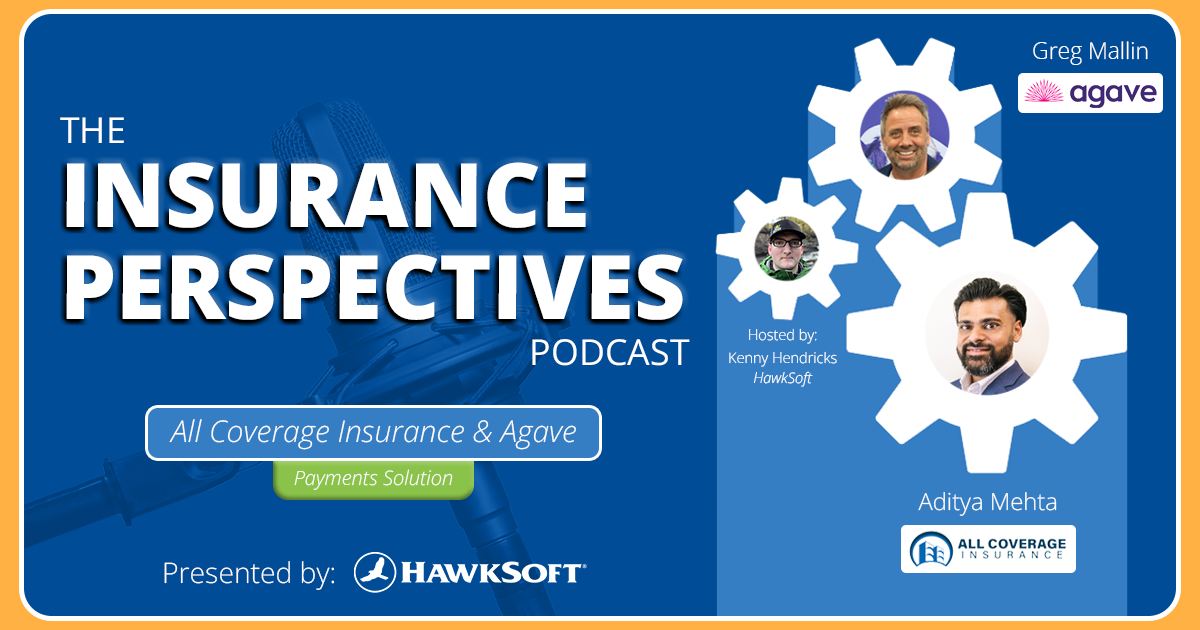One of the biggest challenges independent agencies are battling during the hard market is staff burnout and churn, which leads to hiring difficulties, a never-ending onboarding and training cycle, and reduced productivity and job satisfaction.
What can agencies do to be more strategic about employee retention and satisfaction, as well as hiring and training efficiency, at a time that’s so tough for the industry? Foresight Insurance, which was named Outstanding Agency Overall in Liberty Mutual/Safeco’s 2024 Agent for the Future Awards, has found some answers.  The agency, led by owner Michael Cruz, was recognized for accomplishing impressive increases in renewal revenue and overall revenue in 2024, due to strategies he implemented to improve staff morale and productivity.
The agency, led by owner Michael Cruz, was recognized for accomplishing impressive increases in renewal revenue and overall revenue in 2024, due to strategies he implemented to improve staff morale and productivity.
We sat down with Michael to discuss the achievement, and want to share his insights and tips on how any agency can implement changes that improve both staff retention/satisfaction and agency productivity.
In this article
- Improving employee satisfaction & retention
- Create clear development paths for employees
- Implement remote or hybrid work options
- Offer flexible or reduced work hours
- Track & monitor employee satisfaction
- Streamline hiring & onboarding processes
- Keep your candidate pipeline full
- Hire & train several months in advance
- Map your team into categories
- Make use of technology for hiring & training
Improving employee satisfaction & productivity
The best way to minimize staff turnover is to stop it at the source by improving job satisfaction and development opportunities for employees. In the long run, happy employees are more productive. Solving employee satisfaction issues will increase staff retention, reduce churn, and boost overall productivity for the agency. Here are a few tips on how to avoid staff burnout and promote employee retention and productivity.
Create clear development paths for employees
Staff are happier and less likely to look for work elsewhere when they have a clear understanding of the future of their role and their opportunities for growth. Few people want to stay in the exact same position forever, so make it easy for your team members to understand how they can develop in their role over the next 5 or even 10 years.
You can start by creating a development hierarchy for each area of your team, such as having junior and senior positions depending on experience level. In Michael’s case, each part of his team has a team lead that manages their group. You should have a ballpark estimate of how long it should ideally take an employee to progress through the ranks, so team members have clear expectations of the available advancement opportunities and timelines.
Michael also suggests being open to customizing a position based on the employee’s specific skills, talents, or interests. He’s experimenting with this by creating task forces on his team for areas like technology implementation or teaching, which gives team members the chance to grow and stretch themselves in different areas.

Regular check-ins help employees stay engaged at Foresight Insurance
Implement remote or hybrid work options
Allowing staff the option to work from home part-time or full-time can be a good way to avoid burnout, promote work/life balance, and make work hours feel less demanding for employees. Plus, it has obvious advantages for the employer as well, allowing the agency to retain talent as employees move away and providing a much larger pool to hire from.
The fact is, modern candidates no longer see remote work options as a perk – it’s an expected part of the job, and you may be missing out on the best talent if you don’t offer it as an option. “It’s extremely difficult to get CSRs right now,” Michael observes. “95% of my applicants want remote work. If you’re not open to it, you’re shutting down a huge pool of candidates.” His staff is now primarily remote, with the option to work in-office for those in the area who prefer the office environment.
“It’s extremely difficult to get CSRs right now. 95% of my applicants want remote work. If you’re not open to it, you’re shutting down a huge pool of candidates.”
Putting the infrastructure and processes in place for remote work may require some initial effort (though you may have had systems in place since the pandemic), but Michael feels agencies shouldn’t shy away from it. “There will be some challenges, but at this point it’s not an option – you have to do it. The sooner you accept that reality, the better. You’ve got to keep an open mind and be willing to make changes. If you’re not willing to take a risk on a new model or technology or process, how are you going to evolve?”
Here are a few tips for building a successful remote or hybrid environment.
- Foster strong team communication
The key to a successful remote work environment is good communication. Foresight Insurance uses Microsoft Teams to hold meetings and keep in touch via chat. Team members check in when they start work and leave a message when they step away from their desk, so that calls can be routed accordingly. The team also meets regularly so that information isn’t siloed with individual people.
- Keep your company culture alive
Since you’re not seeing each other in person every day, you may have to be a little more intentional about creating moments for socializing and team building. Michael suggests allowing a few minutes at the beginning of meetings for catching up on each other’s lives, as well as sharing pictures and life updates via chat.
- Update your technology regularly
Digital tools are even more essential in a remote work environment, so don’t fall behind the curve. Michael warns that it’s easier on staff to make small, incremental improvements on a regular basis than to remain stagnant for years until you need a larger, more disruptive tech overhaul.
Offer flexible or reduced work hours
Another way to boost staff satisfaction and attract new hires is by allowing flexible work schedules or reduced hours, which empowers employees to be more productive and motivated during their chosen working hours. In 2024, Michael decided to implement a 4-day, 32-hour work week at his agency without reducing pay, and to offer all federal holidays off.

Michael has seen a change in the satisfaction and productivity of the Foresight Insurance team since implementing a 4-day workweek.
The vision
“The staff burnout was real,” he says of why he made the decision. “Morale was at an all-time low because of the hard market, even for myself. We were just exhausted mentally. I didn’t know what to do and I was banging my head against the wall. That’s when I started looking into the idea of a 4-day work week, because it provides an opportunity to get a break in during the week.”
He points out that the typical 9-to-5 workday originated back in the days of Henry Ford assembly lines. Huge advancements in technology allow modern workers to accomplish far more work in less time, meaning a 40-hour work week isn't necessarily still the answer for optimal productivity.
The implementation
Michael shares, “My proposition to my team was, I’ll pay you the same amount to work for 80% of your hours, but your agreement is to give me 100% of your effort during those hours. I truly believe we have the technology and the tools to work less hours and achieve the same or better results.”
“My proposition to my team was, I’ll pay you the same amount to work for 80% of your hours, but your agreement is to give me 100% of your effort during those hours. I truly believe we have the technology and the tools to work less hours and achieve the same or better results.”
He admits there was a bit of a learning curve for the agency at first, as they adjusted to the new model. They made changes to ensure that tasks didn’t halt or get dropped during a team member’s day off. The team’s structure of not assigning accounts to specific employees helped with this, as well as shared team inboxes that allow each team to see all incoming items and assign them as needed.
Ultimately, the agency achieved impressive growth for the year, even with reduced hours. Foresight’s overall revenue increased by 24% in 2024, with renewal revenue growing over 40%. “It was a big leap of faith, but the agency operation didn’t suffer,” Michael says. “As a matter of fact, we did better. And I’ve truly seen the difference in my staff. I can guarantee you that it’s going to be hard for anyone to convince them to leave Foresight.”
Track & monitor employee satisfaction
If you’re serious about improving employee satisfaction and retention, you should have a way to quantify and track it so you can see how the adjustments you make affect overall satisfaction. It also helps you stay aware of downward trends that might signal that employees are at risk of leaving, so you can address them before it’s too late. Michael uses an HR platform to send satisfaction surveys to employees several times a year, but there are many methods an agency can use to accomplish this.
Streamlining hiring & onboarding processes
Improving employee retention is only one side of the equation. Another place for agencies to target is their hiring and training processes. Here are a few things agencies can do to standardize their processes and make them more efficient and less resource-extensive for existing staff. Get details on how to implement each of these tips in our blog on streamlining agency hiring & onboarding processes.
- Keep your candidate pipeline full
- Hire and train new staff several months in advance
- Map your team into categories
- Utilize technology for hiring and training
Never stop evolving
There isn't one right solution for every agency, so ultimately it’s up to you to decide what changes will be most impactful for your team. The most important thing, Michael says, is to keep experimenting and evolving.
“Can you continue doing business the way you’ve been doing it?” he asks. “Sure. But every year that you don’t keep improving, you’re falling behind. That doesn’t mean that everything you see, you have to do. Have a wish list of things and work on one project at a time. But have an open mind and be willing to fail, because that’s how growth happens.”
More insights from Foresight Insurance: streamlining hiring & onboardingSee our related article on improving agency hiring and onboarding processes, with more insights from Michael on impacts he's made at Foresight Insurance. |






